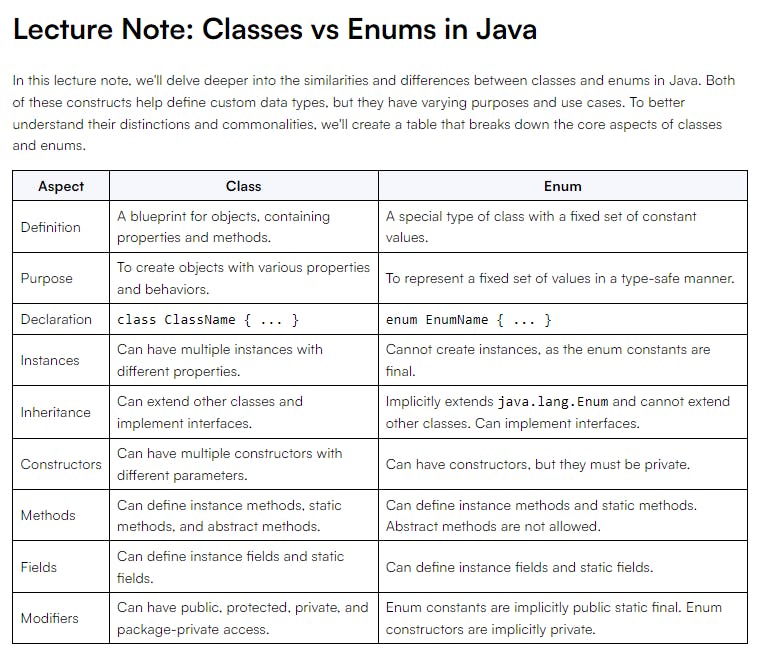Share
Explore
Student Lab Workbook: Java Programming Class - Rock, Paper, Scissors Game
Introduction
Learning Outcomes:
Prerequisites
Table of Contents
1. Overview of the Rock, Paper, Scissors Game
2. Creating the Project
3. Writing the Main Class
4. Defining the Game Logic
5. Running the Game
6. Conclusion
Lecture Note: Java Enum
Introduction
Defining an Enum

Key Takeaways
Using Enums
Enum Methods
Customizing Enum Behavior
Conclusion
Want to print your doc?
This is not the way.
This is not the way.

Try clicking the ⋯ next to your doc name or using a keyboard shortcut (
CtrlP
) instead.